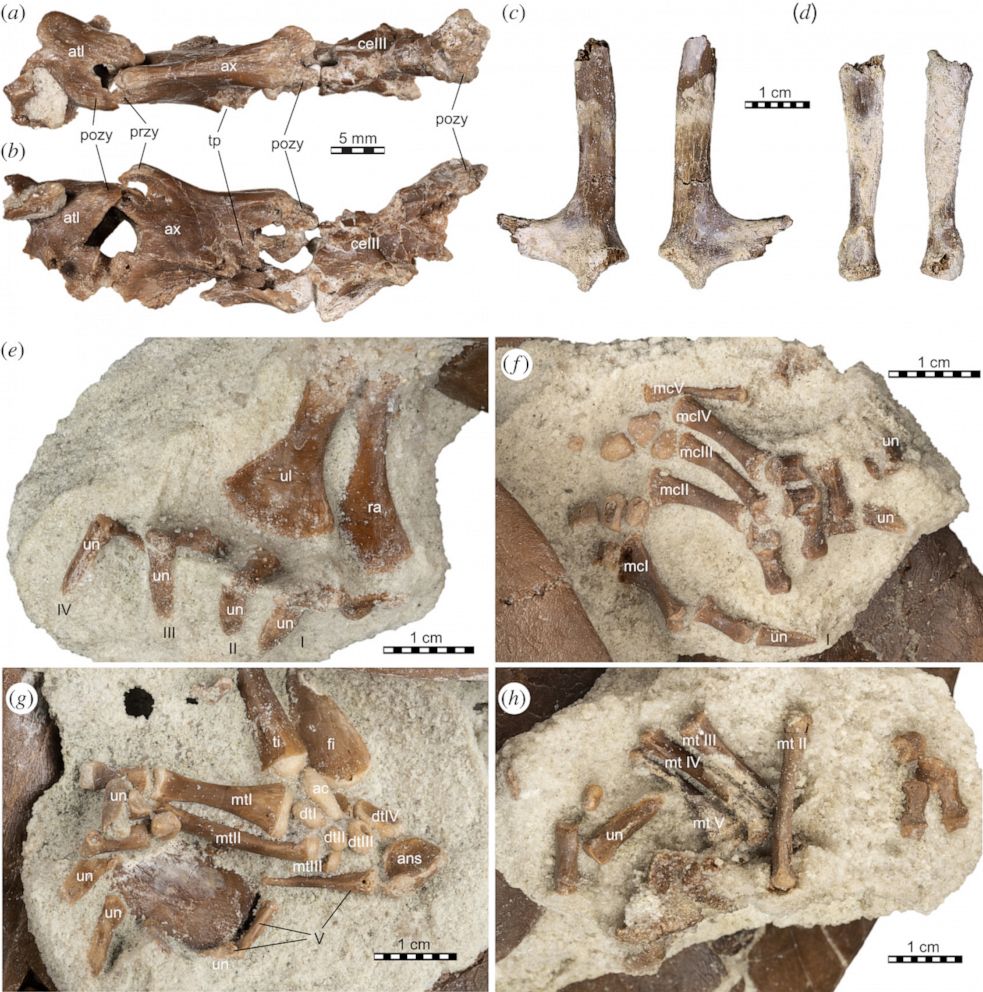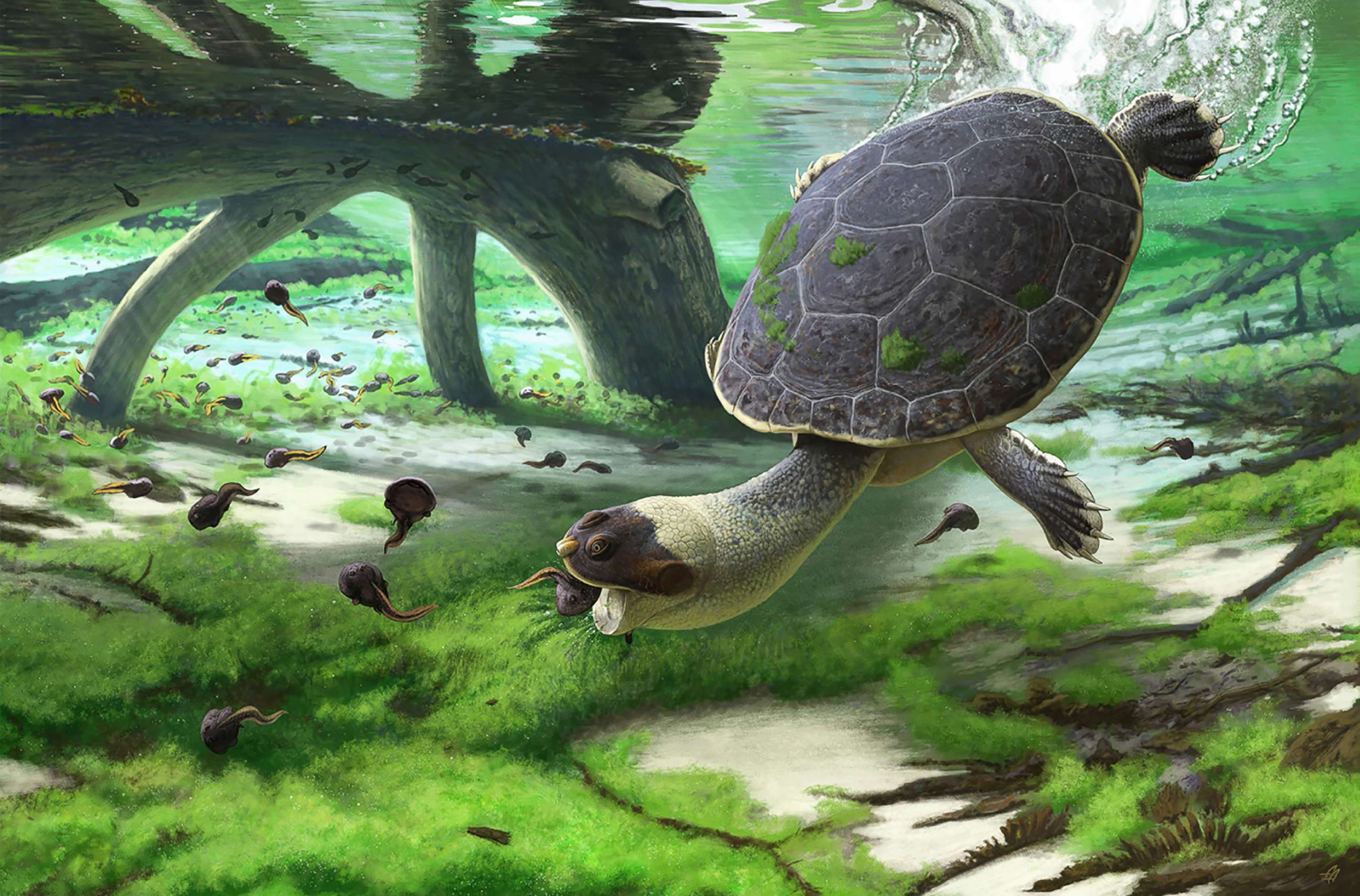New species of prehistoric turtle discovered in Madagascar
The animal would have lived alongside dinosaurs in the late Cretaceous period.
A new species of turtle that roamed Earth alongside dinosaurs and flying reptiles has been discovered in Madagascar.
The near-complete fossil of the quick-mouthed frog turtle, or Sahonachelys mailakavava, was found in the Maevarano Formation in northwestern Madagascar, according to a study published in Royal Society Open Science. The formation "has yielded a series of exceptional fossils" over the last three decades, and in 2015 archaeologists discovered the turtle's skeleton while removing overburden -- rock or soil overlying a mineral deposit -- from the formation.

The freshwater turtle is noted for its frog-like appearance -- an unusually flattened skull, a slender lower jaw and enlarged tongue bones -- and researchers said it was likely a "suction feeder" that ate small-bodied living prey, such as insect larvae and tadpoles by using quick strikes.
The fossil researchers found was "unusual for its fragility and completeness" and displayed numerous morphological adaptions consistent with specialized suction feeding, according to the study.

It likely lived during the late Cretaceous period -- 66 million to 100.5 million years ago -- and would have existed around the same time as the triceratops and the flying reptile pterosaur, researchers said.
The formation where the fossil was found likely would have formed during a time when northwestern Madagascar had pronounced wet and dry seasons. The island already was isolated in the Indian Ocean after having been separated from the African mainland about 165 million years ago and from Antarctica and Australia about 124 million years ago, scientists said.






